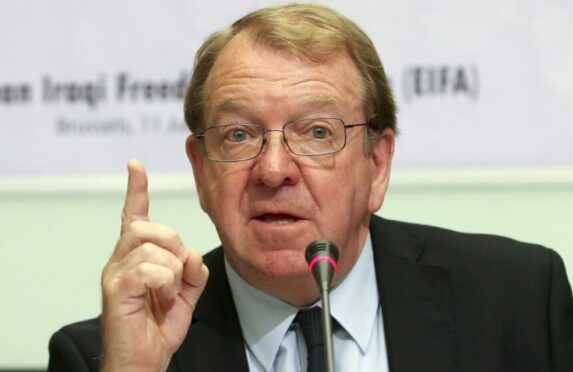
The rusting wreckage of an Argentinian Mirage jet fighter still rears out of the soft peat moor on West Falkland, shot down by an RAF Harrier as it sped low over the rocky outcrops, towards Falkland Sound and San Carlos Water on May 21, 1982.
Although this aircraft never reached its target others did. The Ardent, a Royal Navy Type 21 Frigate, was bombed and sunk on that day four decades ago.
Twenty sailors lost their lives. Many of them lie buried in the little military cemetery at San Carlos, where the famous Colonel H Jones is also interred. He was posthumously awarded the Victoria Cross for his actions as commanding officer of the 2nd Battalion, Parachute Regiment, during the Battle of Goose Green.
Royal Navy divers have gone down to the wreck of the Ardent and attached White Ensign flags to its mast under the sea. Proud, even in death.
The images of war are still fresh in the Falklands, a conflict that took the lives of 649 Argentinians, 255 British and three Falkland islanders.
The 120 minefields, fenced off and out of bounds with “skull & crossbone” warning signs, were only finally cleared in 2020.
The shooting began 40 years ago, on April 2, 1982, when Argentine forces attacked Stanley and overwhelmed the small British garrison there. The Royal Marines were heavily outnumbered and taken prisoner after a fierce firefight. They were stripped of their weapons, photographed lying in the road under guard, then flown out to Buenos Aires for transport home.
“Don’t get comfy,” they told their captors as they stepped aboard the aircraft, “we’ll be back.”
In fact, even as the Argentine generals were toasting their victorious conquest, they heard the alarming news a British Task Force was already at sea, instructed to re-take the Falklands by Prime Minister Margaret Thatcher. She deployed aircraft carriers, submarines, frigates and destroyers, 7,000 troops, artillery, armoured cars and aircraft.
It was an all-out war, fought at the extremity of a long-range logistical supply chain. In the conflict, Britain had one key advantage, a trained, professional Army, Navy and Air Force. On May 21, 1982, the first of them landed at San Carlos Bay. Though modest in size, the forces assigned to the Falklands were made up of formidable fighting men.
Arbroath-based 45 Commando and the 2nd Battalion of the Scots Guards were heavily involved in the war, losing 15 service personnel.
By then, the Argentine forces occupying the islands had swollen to 12,000 men. Most were poorly trained conscripts. Apart from an officer corps and some senior non-commissioned officers, the Argentinian military was made up of boys who had to do one year’s mandatory national service. The hapless youngsters “los chicos de la guerra”, had to face Britain’s professional forces and it is no slur on their bravery to say they were no match.
Our troops went from San Carlos, by way of decisive actions at Goose Green and on the summits surrounding Stanley, to their final victory.
The total Falklands population today is 3,642, most of whom live in Stanley. Only about 400 choose to live in the widely scattered sheep settlements and isolated islands they refer to as “Camp”.
There is a great feeling of pride, coupled with a palpable sense of remorse, that so many died fighting for the freedom of so few. For the people of the Falklands, the sacrifice will never be forgotten.

Enjoy the convenience of having The Sunday Post delivered as a digital ePaper straight to your smartphone, tablet or computer.
Subscribe for only £5.49 a month and enjoy all the benefits of the printed paper as a digital replica.
Subscribe